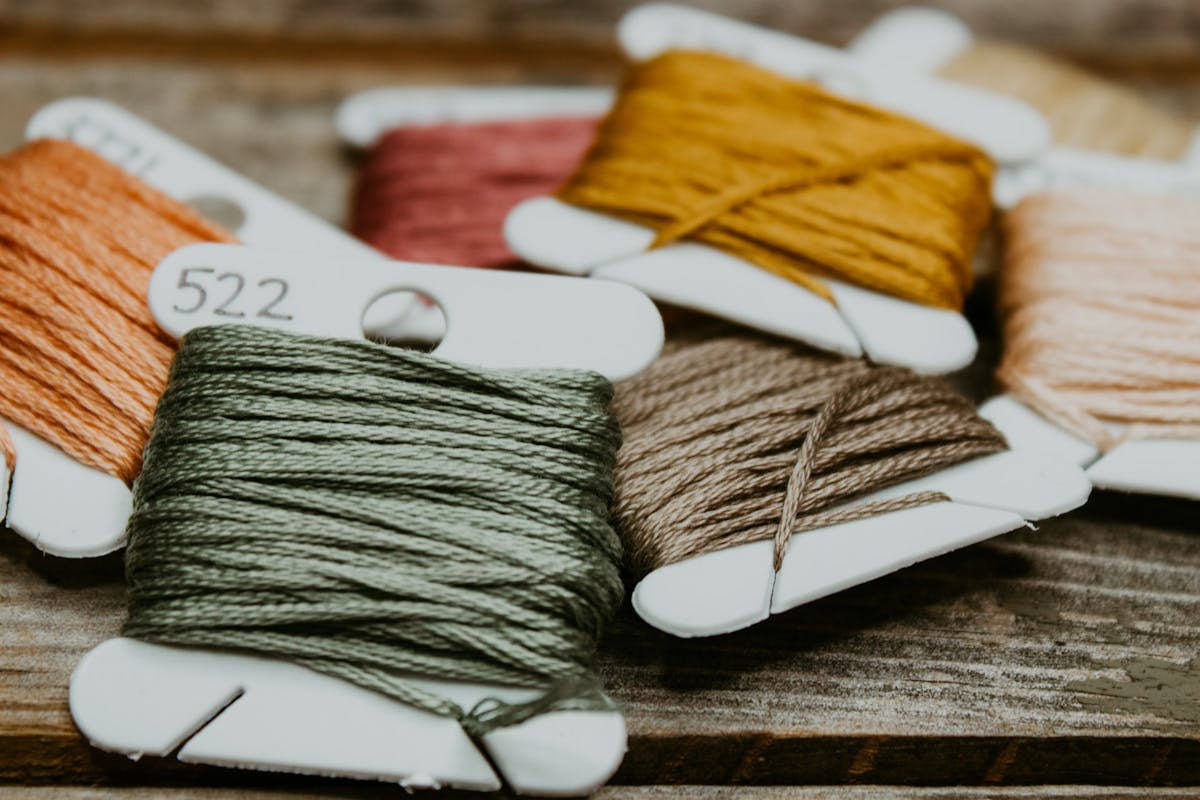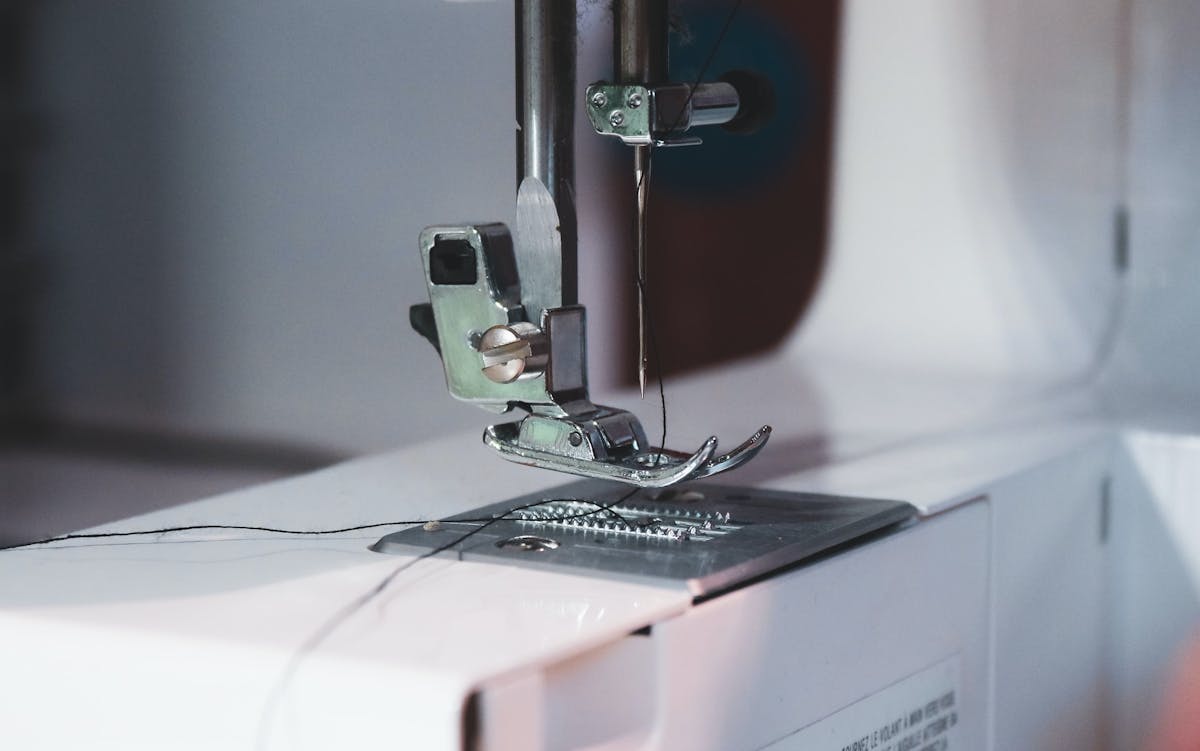We all know grandmas are the savviest at making do with what they already have. So, before you step out to buy something new for your sewing kit, channel your inner grandma and first have a look around the house to see if you can find a solution for your sewing woes using something you already have. Repurposing household goods is a great, environmentally friendly option, which in my opinion, is the biggest sewing hack of all. Read on for some granny-inspired tricks to create order in your spaces and sewing tips from before we could buy a special tool for every little thing.

Organizational Hacks For Your Sewing Room
Steel Wire Pincushions
Making your own pin cushions saves money and is a great way to use up leftover fabric scraps. To keep your pins sharp for longer, fill your handmade pincushions with a mixture of steel wool and rice. The steel wool will sharpen your pins every time you stab them into the cushion, and the rice will keep everything nice and dry on the inside.
Peg Boards For Your Walls
Inspired by many garage workshops, adding a panel to your sewing room wall where you can use to pin, peg, or magnet things up, will revolutionize your usable space. Pegboards are a great place to store large tools such as rulers and scissors as well as small items like buttons, buckles, and other finishings. This extra place frees up precious table space while items are still out and easy to access. You can use it for planning too, adding designs, clothing patterns, and fabric swatches to your wall for you to mull over.
Storing Fabrics To Prolong Their Life
If you have a sizable fabric stash you treasure, make sure you are storing fabrics correctly. The best way to keep them away from direct sunlight, artificial light, dust, and critters, is by storing them in opaque plastic tubs or drawers. Though this will keep them protected, it isn't ideal for those of us who are very visual and want to see what we have, so take a little swatch of each fabric to make swatch cards that correspond to each box or drawer to keep on hand for quick references.
Sort Scraps By Size
Keep your scraps sorted by corresponding size and color in ziplock bags or shoe boxes so you can quickly find what you need. There is nothing worse than getting excited about a scrap of fabric you want to use, only to realize you don't have enough for what you want. Before storing fabric scraps, tidy them up a bit by cutting off unusable parts and long threads, as these will just make your scrap stashes look disorganized.
Keep Loose Ribbons, Elastics, and Drawstrings Organized
Save your kit from becoming a giant ball of tangled notions by keeping ribbons, elastics, and bias bindings neatly together. You can recycle old thread spools for this, or create cardboard cutouts, to wrap them around. For other items, use binder clips or washing pegs to keep bundled.

Hacks To Try When Sewing
Quickly Thread A Needle With Hairspray
A quick spritz of hairspray on the end of your thread will stiffen it and keep the thread from fraying. This takes away the usual frustrations and makes threading any needle absolutely painless. This trick works when you are threading a machine, serger, or needle for hand sewing, making it super easy to attach your label for handmade items!
Binder Clips Instead Of Pins
Some fabrics just hate pins! Thick fabrics such as blanket weight wools, meltons, or faux furs can be hard to pin without bending the pins or losing them in the fabric's pile, so try binder clips next time! They are strong enough to clamp edges together without one layer slipping and work superbly for non-woven materials such as leather and Polyurethane, where traditional pins will leave holes.
A Solution To Cutting Slippery Fabrics
If you find your fabrics are not staying smooth while cutting, try using muslin underneath. Cut a length of muslin to cover your table or surface, pulling it tight so that it lays flat without any bumps, and tape around the edges. Then just lay your fabric of choice over the top. The muslin will help the fabric from slipping around, but just be careful to only cut through the top layer of fabric to leave the muslin intact.
Painters Tape For Quilting Straight Lines
Most of us have a tendency to veer to one side when sewing, even by the smallest amount. This often isn't noticeable while sewing garments, but when you are quilting these small amounts at each row add up quickly. This means it becomes much more obvious when you get to the edge of your quilt, as stitching rows will not line up with the quilt edge. A row of painter's tape (or any low-adhesive masking tape) stuck down directly to the quilt makes a great guide (or registration line) so that you will know sooner if you need to correct your lines. You can add as many rows of tape as you find helpful, and you can even reuse the pieces of tape from lines you have already blocked.
Beeswax Your Threads
If you do a lot of hand sewing or need to attach a button, tailors beeswax will quickly become a loyal companion to your sewing kit. Prepare your thread by running it over the beeswax before sewing to prevent it from knotting and tangling, and give it a bit of extra strength. Try to find a needle with a large eye when attaching your buttons so you can double the waxed threads to make it even stronger.
For additional sewing tips, check out our Sewing Tips and Tricks For Every Sewist, and don't forget to let us know on Instagram, Twitter, or Facebook what your go-to sewing hack is!













